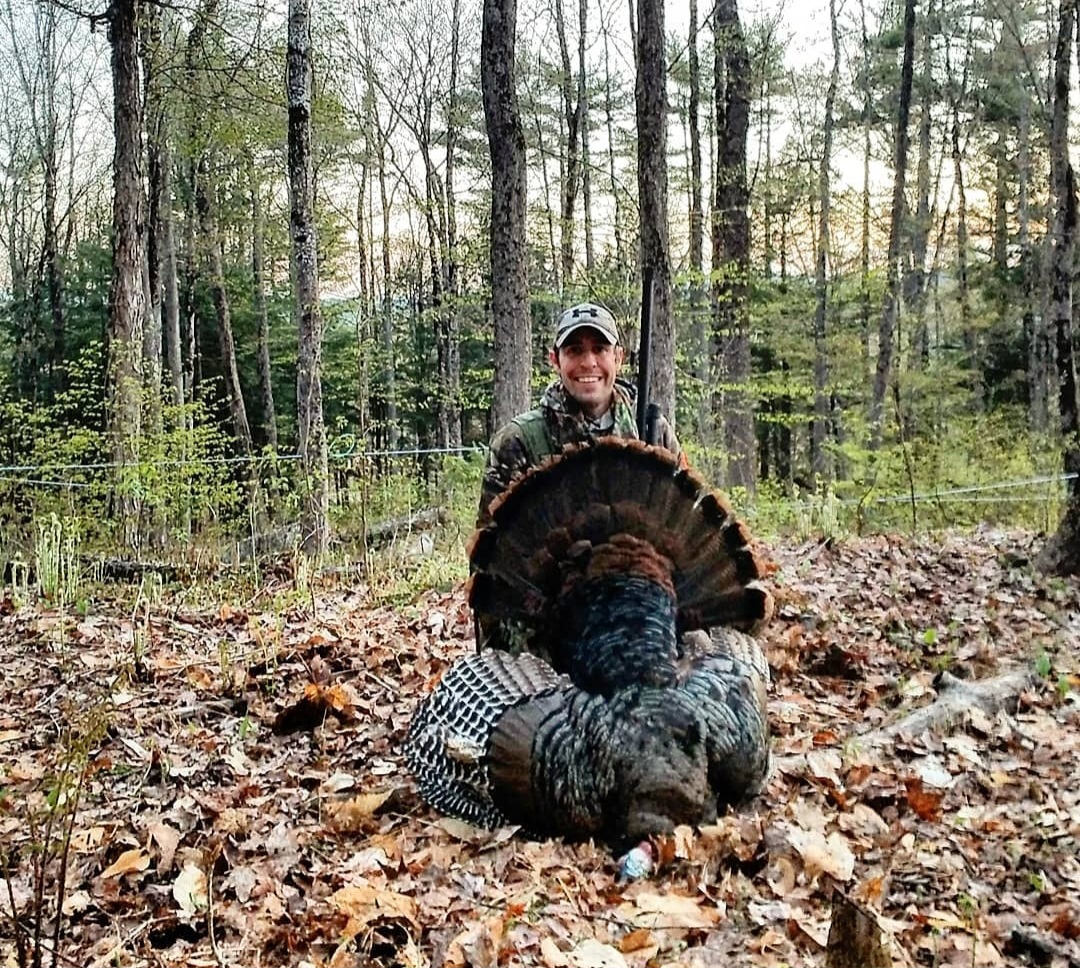
As I stepped out of my truck, the crisp morning air greeted me with a slight chill. I took a deep breath, absorbing the scent of dew-covered grass and damp earth. Today was the day I had been waiting for all year – the opening day of turkey season.
Turkey hunting can be a thrilling and rewarding pursuit, but it takes skill and strategy to consistently bag those elusive gobblers. In this article, we’ll share expert tips and tricks to help you elevate your turkey hunting game, from perfecting your calling techniques to employing advanced decoy strategies. Let’s dive in!
Exceptional Turkey Calling Techniques
- Perfect your hen imitation skills: To effectively entice gobblers, study the diverse vocalizations of hens in the wild and replicate their purrs, whines, moans, and clucks. These subtle nuances can make your calls alluring to gobblers. To learn more be sure to check out our guide on turkey mouth calls for beginners to get started.
- Begin softly and steadily increase volume: When calling a gobbler, start with gentle yelps and clucks, gradually intensifying your calls. This tactic will make your calling seem more authentic and persuade cautious gobblers to come closer.
- Master friction calls for optimum results: Proper technique is crucial when using friction calls. Hold the striker at a 45-degree angle, maintaining continuous contact with the surface. Vary pressure and striker movements to produce different sounds, such as yelps and purrs.
- Incorporate variation and movement in your calling: To make your calls more convincing, alter the direction, volume, and tone by turning your head or using different types of calls. This strategy will keep gobblers intrigued and lure them nearer.

Tried-and-True Turkey Hunting Tactics
- Hone your tree talk skills: When setting up near a roosting turkey, wait until first light before softly delivering a tree yelp. If the gobbler responds, stay silent and get ready for its approach, as it’s now aware of your location.
- Be patient after flydown: Avoid calling right after a gobbler descends from its roost. Allow it some time to settle, then charm it with a series of enticing calls.
- Strategically deploy decoys: Place a hen and jake decoy in the center of a known strutting zone, like a field, to attract gobblers. Approach the area under cover of darkness to prevent startling any nearby birds. For more tips, check out our guide on turkey decoys.
- Outwit pressured gobblers: To find unpressured gobblers on public land, observe both turkeys and fellow hunters. Focus on areas with minimal human activity to discover undisturbed birds.
- Switch tactics when needed: If a gobbler has resisted your calls for several days, try a new approach. Alter your calls, setup location, and approach direction to keep the bird on its toes. Late-season turkey hunting tactics can be especially useful in these situations.
- Leverage terrain for a better approach: Use terrain features to conceal your movement and approach gobbling turkeys more closely. This tactic can help you set up for a more successful shot opportunity.
- Take advantage of logging road bends: Gobblers often strut along logging roads, particularly near bends where they can easily see in both directions. Establish your position within shooting range of these bends to boost your chances of encountering a gobbler.
Key Gear for Turkey Hunting Success
- Camouflage blind: A strategically placed camo blind can greatly improve your ability to approach and call in cautious gobblers.
- Decoys: Employ a combination of hen and jake decoys to draw in gobblers. Set up with the sun at your back, so it shines directly into a gobbler’s eyes as it approaches. This will make it harder for the turkey to spot you while also enhancing the decoys’ lifelike appearance.
Advanced Decoy Strategies
- Pairing Decoys: Consider using a hen and jake decoy together to provoke a dominant tom’s jealousy, encouraging it to approach your setup more aggressively. Position the decoys about 20 yards away from your location and arrange the jake decoy slightly behind the hen decoy, simulating a mating or submissive posture.
- Motion Decoys: Motion decoys can add an extra level of realism to your setup. A decoy with a moving fan or a feeding hen that bobs up and down can help catch a gobbler’s attention from a distance. Be sure to check your local regulations regarding the use of motion decoys, as they may be restricted in some areas.
Essential Turkey Hunting Gear
- Camouflage: Proper camouflage is vital when turkey hunting, as these birds have exceptional eyesight. Choose a camo pattern that matches your hunting environment, and ensure your face, hands, and any other exposed skin are covered.
- Shotguns and Chokes: Select a shotgun that you are comfortable shooting, typically in 12-gauge or 20-gauge. For chokes, opt for one specifically designed for turkey hunting. These chokes offer tighter patterns at longer distances, increasing your chances of a clean, ethical shot.
- Turkey Loads: Turkey-specific loads, like those containing heavier pellets, are designed to provide the necessary energy to bring down a large tom. Be sure to pattern your shotgun with the specific load you plan to use, as different loads can produce varying results.
- Ground Blinds and Tree Seats: A ground blind or a comfortable tree seat can make extended sits more tolerable, allowing you to remain still and undetected by approaching turkeys. Ground blinds can also offer additional concealment, particularly when hunting with a bow.
As you can see, turkey hunting can be a challenging and rewarding experience. By utilizing expert tips and tactics, you can boost your odds of success in the field. Remember to scout thoroughly, employ effective calling strategies, and invest in quality gear to make your spring turkey season an unforgettable one. Above all, always practice safe and ethical hunting. And if you’re interested in capturing your hunts on film, check out our guide on how to self-film your turkey hunts.